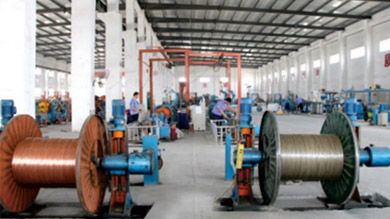des . 15, 2024 18:03 Back to list
Understanding the Functionality and Benefits of Butterfly Valves in Fluid Control Systems
Understanding Butterfly Valves A Comprehensive Overview
Butterfly valves are widely utilized in various industries for their efficiency and reliability in controlling the flow of fluids. These valves play a crucial role in regulating the flow and pressure of fluids in pipelines, making them an essential component in systems ranging from water treatment plants to chemical processing facilities.
What is a Butterfly Valve?
A butterfly valve is a type of quarter-turn valve that uses a circular disc or plate to control the flow of fluid. The disc is mounted on a rotating shaft, and when the valve is closed, the disc is perpendicular to the flow direction, blocking the passage of the fluid. When the valve is opened, the disc rotates to a parallel position, allowing fluid to flow through the valve with minimal resistance.
Design and Construction
The design of a butterfly valve is surprisingly simple yet effective. It consists of three main components the body, the disc, and the actuator. The body of the valve is engineered to withstand high pressure and other harsh conditions, depending on the application. The disc is typically made of materials such as stainless steel, cast iron, or plastic, chosen for their durability and resistance to corrosion.
The actuator, which can be manual (hand-operated) or automated (electric or pneumatic), is responsible for turning the disc to either open or close the valve. Automated actuators provide ease of use and precise control, making them suitable for complex systems requiring frequent adjustments.
Types of Butterfly Valves
Butterfly valves come in various types, each tailored for specific applications. The most common types include
1. Concentric Butterfly Valve This is the most basic type, characterized by its simple design where the disc is centered in the pipeline. It is commonly used in water supply and wastewater treatment systems.
2. Eccentric Butterfly Valve This valve features an offset disc, allowing for a more efficient flow control and reduced turbulence. It is ideal for applications involving higher pressures or viscous fluids.
3. Double Eccentric Butterfly Valve Also known as a high-performance butterfly valve, it has two offsets that allow for tighter sealing and reduced wear. It's often used in critical operations where leakage is unacceptable.
4. Triple Eccentric Butterfly Valve This design incorporates three offsets, providing even tighter sealing capabilities, making it suitable for high-pressure and high-temperature applications.
Advantages of Butterfly Valves
butterfly valve

Butterfly valves offer numerous advantages over other types of valves, making them a popular choice in many industries
- Compact Design Their relatively small size makes butterfly valves easy to install and space-efficient compared to larger valves.
- Quick Operation The quarter-turn operation allows for rapid opening and closing, which is particularly valuable in emergency situations.
- Low Pressure Drop The streamlined design of the disc minimizes resistance, leading to lower pressure drops across the valve.
- Cost-Effective Butterfly valves are generally less expensive than other valve types, making them a cost-effective choice for many applications.
Applications
Butterfly valves are versatile and can be found in a variety of sectors, including
- Water and Wastewater Management Used for controlling flow in municipal water supply systems and wastewater treatment facilities.
- Chemical Processing Essential in controlling the flow of various chemicals in industrial settings.
- Oil and Gas Industry Employed in pipeline control systems to manage the flow of crude oil and natural gas.
- HVAC Systems Used in heating, ventilation, and air conditioning applications to regulate airflow.
Conclusion
In summary, butterfly valves are a vital component in many fluid control systems due to their efficient design and ease of operation. With various types available for different applications, they offer flexibility and reliability across a multitude of industries. Understanding the features and benefits of butterfly valves can help engineers and operators make informed decisions, ensuring optimal performance of their fluid handling systems. Whether it’s for water treatment, chemical processing, or HVAC applications, butterfly valves remain an indispensable asset in modern engineering.
Share
-
Advanced Technology in Wire and Cable FactoryNewsAug.19,2025
-
Applications of Ball Check Valve in Water Treatment PlantsNewsAug.19,2025
-
How Osy Gate Valve Ensures Leak - Tight SealingNewsAug.19,2025
-
Selection Criteria for Wafer Type Butterfly ValveNewsAug.19,2025
-
Threaded Ball Valve Pressure RatingsNewsAug.19,2025
-
Y Strainer PN16 Cost - Effectiveness AnalysisNewsAug.19,2025


